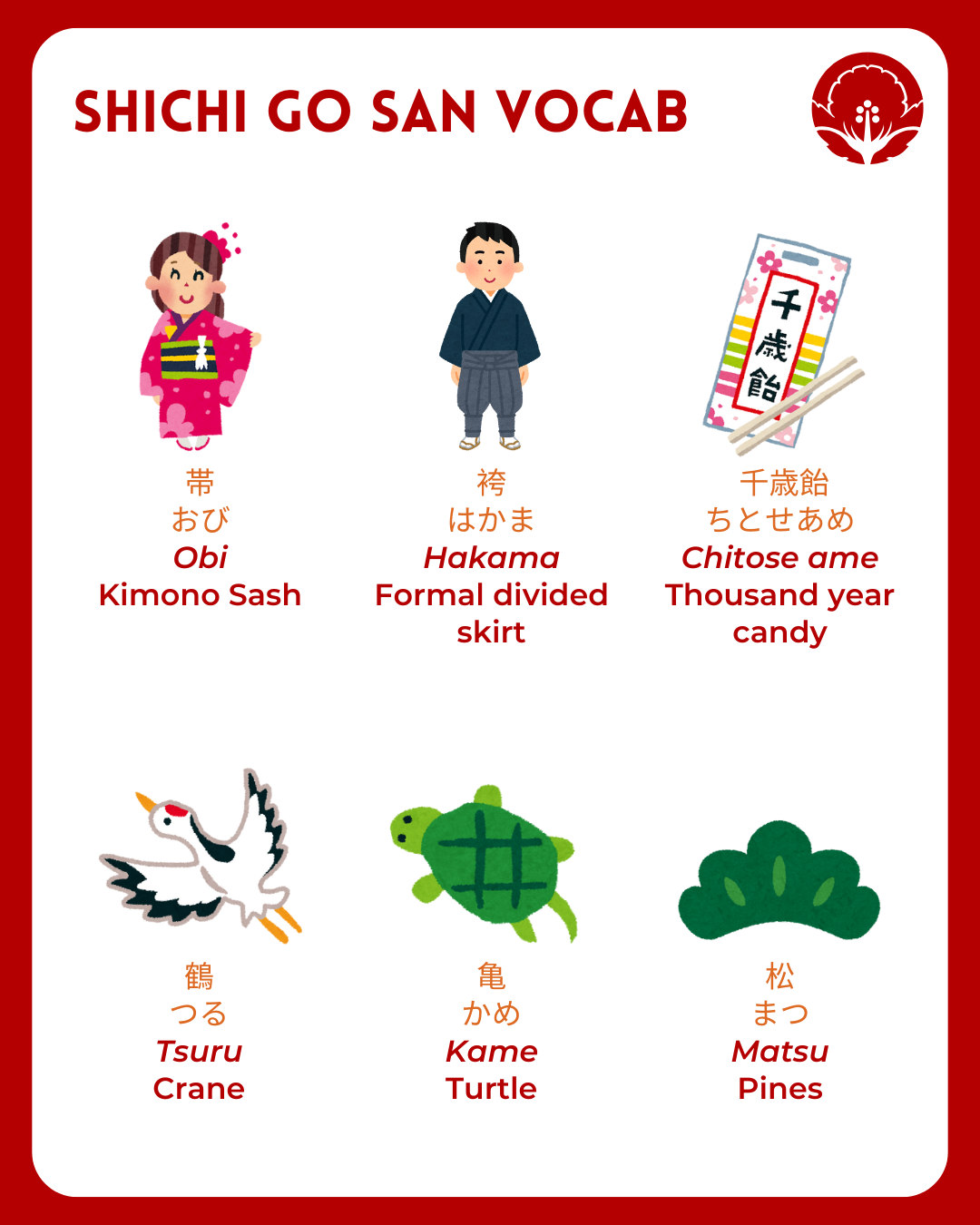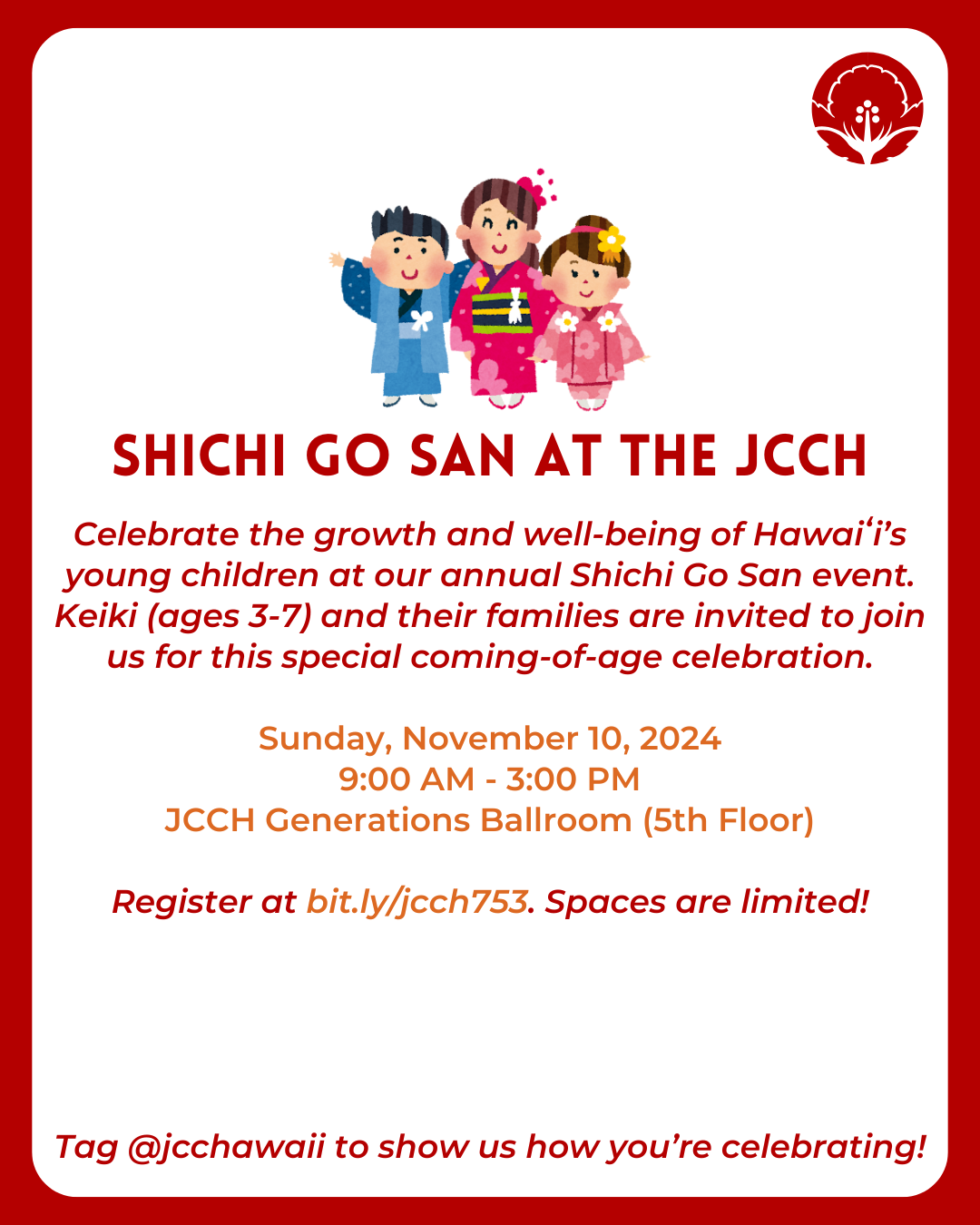Shichi Go San 七五三 (seven-five-three) is a Japanese coming-of-age event to celebrate the health and good fortune of young children. Traditionally, this event is to recognize three-year-old and seven-year-old girls, and five-year-old (sometimes 3-year-old) boys.
Age shichi 七 (seven) marks the transition into young womanhood as girls start to wear obi 帯 (kimono sash) with kimono. Boys begin to embrace their masculinity at age go 五 (five) when they start to wear hakama 袴 (formal divided skirt). At age san 三 (three), both boys and girls reach the end of toddlerhood.
The origins of Shichi Go San are traced back to the Heian period, a time when nobles celebrated mid-childhood milestones. However, others believe it is from the Muromachi period, a time of high infant mortality. In East Asian numerology, odd numbers such as the ages celebrated are considered lucky.
On November 15, 1681, it is believed that Shogun Tokugawa Tsunayoshi took his eldest son, Tokumatsu, to a Shinto shrine. On this day, he prayed for his son’s health, establishing November 15th as an auspicious day for this tradition.
Parents will take their children to visit a Shinto shrine. Most girls will wear a kimono, while the boys will wear a haori 羽織 (traditional jacket) with hakama. At the shrine, families will pray for the future, health, and happiness of their children. A priest will bless each visiting child.
After the shrine visit, parents often give children chitose ame 千歳飴 (thousand year candy), an item symbolizing long life. The packaging features tsuru 鶴 (cranes), kame 亀 (turtles), and matsu 松 (pines). This tradition expresses the parents’ hope for their children’s health and prosperity.
 |  |
